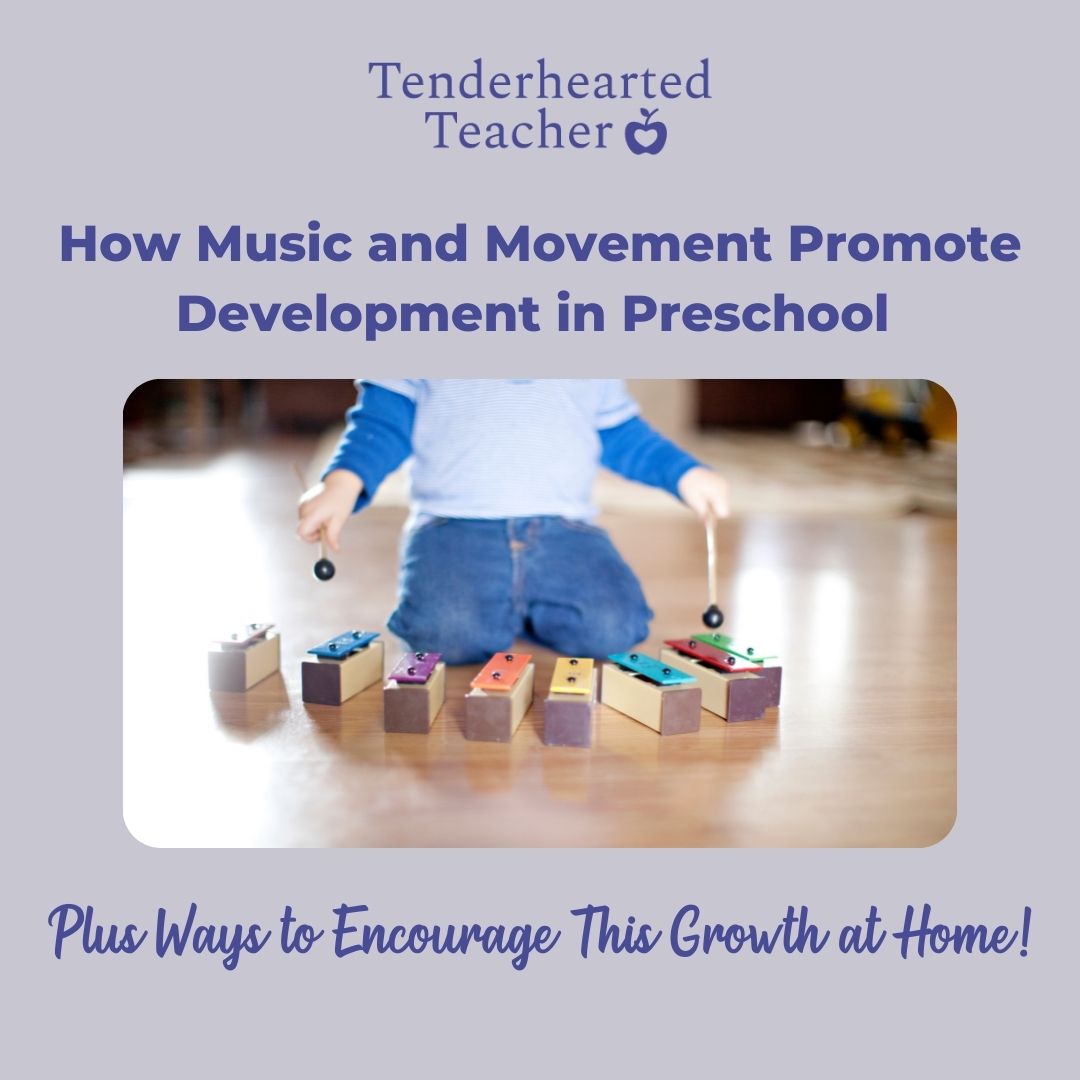
Please note: This post contains affiliate links. As an Amazon Associate I earn from qualifying purchases. Therefore, if you buy something through these links I will receive a small commission at no extra cost to you. Thank you for your support.
As an early childhood educator, I have a keen understanding of how music education can be beneficial for young children. In fact, I can personally attest to its benefits in my preschool classroom for children with multiple disabilities. For example, many of my students are classified as having speech or language delays, but you wouldn’t know it during musical activities. This is because music is a universal language. So, in this post, I’ll be sharing various examples of how music and movement promote development in preschoolers. I’ll also provide simple ways you can encourage music development at home.
What Does The Research Say?
Did you know that music can positively impact a person’s development starting in infancy? A recent study examined the impacts of singing on babies and “found that singing—more than talking—keeps babies calm and can lead to stronger social bonds with parents, improved health, and even greater language fluency.”
Additionally, exposure to music education throughout childhood can help to enhance other skills. According to PBS.org, “learning music facilitates learning other subjects and enhances skills that children inevitably use in other areas.”
With that said, music, dancing, and singing are intertwined into almost all aspects of my preschool classroom curriculum and daily routines. In fact, creative and visual arts are part of the New Jersey Preschool Teaching and Learning Standards which state that children will “express themselves through and develop an appreciation for” both music and creative movement and dance. Therefore, here are a few examples of how music and movement are incorporated throughout the day in my classroom:
- Children participate in structured and unstructured music and movement activities–this includes experiences with song and musical instruments. This occurs daily during various periods of the day such as free-choice centers, circle time, recess, etc.
- We sing songs when we welcome each other into the classroom each day as well as when we say goodbye.
- Rhymes, songs, chants, and finger-plays are used to tell stories and teach academic and social-emotional content.
- Songs are used to help guide children through transitions to new activities or tasks (like clean-up, snack time, washing hands, etc.)
So How Does Music and Movement Promote Development in Preschool?
1. Language/Communication
Music and singing help children develop communication skills, provide ways of expressing themselves, and build their vocabulary. Preschoolers are able to learn new words through memorization which is brought on by the repetitive lyrics, patterns, and rhythms of music.
2. Gross Motor Skills
Movement and dancing help children engage in gross-motor development. For example, moving our bodies to music helps develop muscle tone, balance, and coordination.
3. Fine Motor Development
Handling musical instruments helps students with fine-motor development—strengthening the small muscles in their hands, fingers, and wrists. This in turn helps with writing and self-help skills like eating, dressing, and toileting.
4. Social-Emotional Learning
Music and dancing are great social-emotional experiences because children can sing, dance, perform, and engage together—no matter their age or level of development. In addition, children can be exposed to and learn about different backgrounds and cultures through music.
5. Listening Skills
When a child listens to music they are learning to decipher different sounds and where they come from. In addition, they are hearing the patterns of speech, sounds of words, various tones, and rhythms. This type of exercise is good practice for a child’s overall listening, auditory processing, and comprehension skills.
Ways You Can Promote Your Preschooler’s Development with Music And Movement at Home
Parents/caregivers will often ask me if I recommend enrolling a child in music or instrumental lessons. The answer is yes, absolutely. However, you can easily incorporate musical activities into your everyday life at home in other ways too (especially if private music lessons are not an option for your family.) Here are a few simple ideas:
Add Music Play to their Daily Schedule
Add instruments or other musical toys into the play rotation and set aside a time of the day to play with those particular toys. Here is a great starter set from Melissa & Doug.
- DIVERSE 10-PIECE MUSICAL INSTRUMENT SET: The Melissa & Doug Band-in-a-Box Clap! Clang! Tap! is a 10-piece musical instrument set with a variety of instruments that get kids moving, grooving, and feeling the beat.
- EXPOSES CHILDREN TO MULTIPLE TONES: Melissa & Doug musical instruments help children develop a musical ear. This set exposes your mini-musician to different tones, volumes, and rhythms.
- HANDY WOODEN CRATE: To keep this band set for kids organized, we’ve included a durable wooden crate that has plenty of space to store each of the 10 instruments.
- GREAT GIFT FOR KIDS 3 TO 6 YEARS: This set is an ideal gift for kids ages 3 to 6 years. Add a Melissa & Doug Wooden Beginner Recorder to round out the musical play experience and give kids an engaging option for screen-free fun.
- “THE GOLD STANDARD IN CHILDHOOD PLAY”: For more than 30 years, Melissa & Doug has created beautifully designed imagination- and creativity-sparking products that NBC News called “the gold standard in early childhood play.”
Get Crafty! Make Your Own Musical Instruments
Making your own instruments is a family-fun arts & crafts activity! Use empty containers with lids, like yogurt and sour cream tubs, to create a drum set. Fill empty bottles with uncooked rice to make shakers (I’d recommend adding some tape over the lid for a tight seal.) Finally, use sturdy paper plates and dry beans to make a tambourine.
Make Up Your Own Silly Songs and Lyrics
Create your own silly songs to sing during play or to help your children to complete daily tasks. For example, my husband and I sing the song “Brush, Brush, Brush your Teeth” (to the tune of “Row, Row, Row your Boat”) when our little one brushes his teeth. We sing, “brush, brush, brush your teeth, brush your teeth with me. Get rid of all the plaque and the little cavities.” It may seem silly at first, but he loves it and it makes the process go smoothly each morning and night. We also sing a song to the same tune when we’re playing with building blocks. “Stack, stack, stack the blocks, stack the blocks up tall. Stack, stack, stack the blocks, will they stand or fall?”
Have a Dance Party
Put on a fun playlist and shake it out. Play songs like “Head, Shoulders, Knees, Toes” and correctly model the movements, and have your child copy what you do. In addition, play the “musical freeze” dance. This is a fun activity that practices your child’s listening skills and gives them the opportunity to follow directions.
Put on a Show
Get creative! You and your child can write and sing original songs, choreograph simple dance routines, or perform your all-time favorites. You can record your performances on your cell phone and watch them again later or share them with family and friends. Here are some of my favorite channels on YouTube that feature age-appropriate music and movement videos.
My Favorite YouTube Channels for Preschool Music & Movement
Barefoot Books
This channel belongs to one of my favorite children’s book publishers. They write wonderful stories, create beautiful videos, and have singalongs that are so incredibly catchy! Their channel states, “At Barefoot Books, we create award-winning books and gifts that celebrate diversity, spark curiosity, and capture children’s imaginations. Our mission is to share stories, connect families, and inspire children with our wide range of educational singalongs, folktales from around the world, #OwnVoices picture books and so much more.”
Super Simple Songs
This channel features classic nursery rhymes, original songs, and even children’s shows that are preschool-appropriate. The channel states, “Learn and explore through song and movement with Super Simple Songs! Our team of educators has created some of the most popular children’s songs on YouTube to get up, move, and sing along with!”
Jack Hartmann
I can always count on the Jack Hartmann channel to have songs that will get my students up and ready to move while also learning academic concepts. The channel states, “Our songs for kids and educational videos will help your children learn counting, numbers, reading and language skills, nursery rhymes, science, physical fitness, dance, and movement. Children actively participate in all the learning with lots of movement and fun.”
Here Are Other Posts You May Enjoy:
- Why Social-Emotional Learning Matters: Especially in Preschool
- How to Deal with Challenging Behaviors in Preschool
- Stages of Emergent Writing In Preschool: What Stage is Your Little One In?
Now talk to me! How do you use music and movement in your home to promote development? Share your ideas and comments below.
SAVE TO PINTEREST
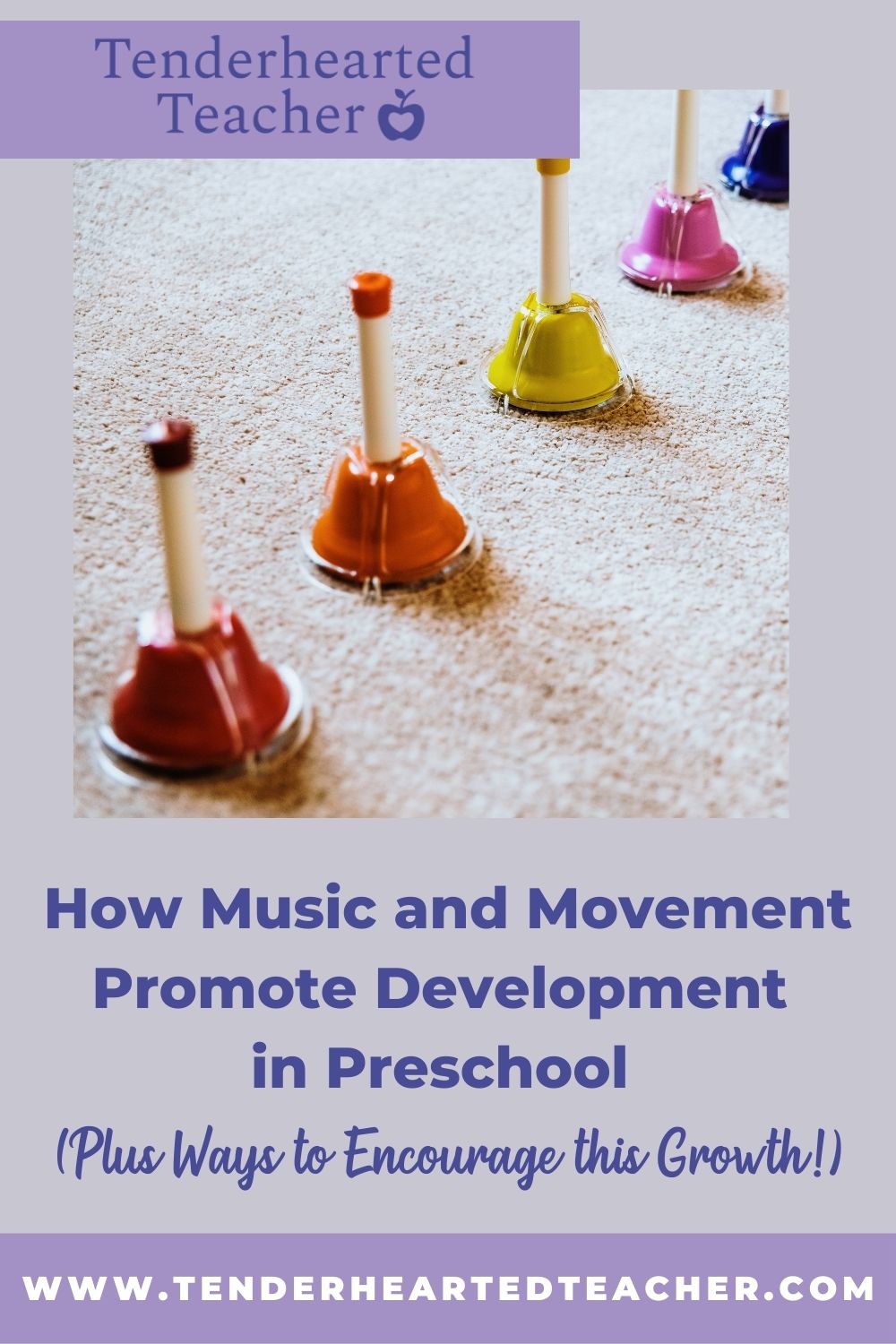

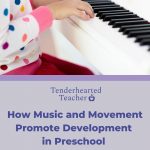
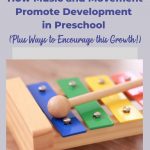
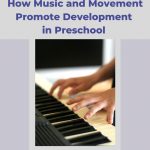
Great suggestions! I love the videos. I plan to save them for my 3-year-old niece.
Thank you, Tina. All three of these channels have really great video playlists!
Love this! As a former Kindergarten teacher of 5 years, we used music every day! And many children would remember the educational songs over something I had taught them. Love your article!
Thank you LaShae! I feel the same way. Even as an adult, I tend to memorize information with songs better than something I’ve heard or read.
Nice post! I used to teach grade school at an international school, but singing was forbidden due to Corona. This pandemic has robbed our littles of some of the most teachable moments. I sing with my son all the time.
Great article! Music IS a powerful tool for learning. I love your suggestions. Kids (teacher and parents, too) love Jack Hartman and Super Simple Songs. I’ve never heard of Barefoot Books but I just skimmed through a few and think they’re great. I’ll be adding them to my playlist. Thanks for sharing.
Thank you Debbie, I found Barefoot Book’s children’s books before I discovered their YouTube page. They are a fantastic company. I’m sure you’ll love their content. 🙂
Great Read! I know music played a huge part in my own happiness as a child.
Thanks for sharing!
I’m so glad you enjoyed Erin. Thank you.
My kids are no longer pre-schoolers. 1st and 4th graders, but when they were little I incorporated into our playtime to foster growth. Excellent article.
This is such an informative article! My son loves listening to music, so I’ll have to check out those youtube videos!
Great post! I’m a homeschooling mama and I just started to incorporate more music into our daily routines. I’ll have to check out the videos as well.
This is such an informative post! I do have music and songs playing in the house often and it does make me and my daughter feel happy. But didn’t realize the larger picture. Thank you for this post. I’ll keep coming back to your amazing website!
Thank you so much! I’m so glad you enjoyed this post. Please come back again. 🙂
Wonderful post. I have noticed over the years that kids are more interested to learn and remember something when taught through an educational song… makes it interesting for them.. even a periodic table 🙂
I totally agree! I can still remember songs from my childhood!
Such great information here, I’ve noticed my 18-month old son is taking an immediate interest in any music playing and when I sing to him and now I know why! These resources are great thank you 🙂
Thank you Stephanie! Yes, my 21 month old is the same way!
I enjoyed reading your post about how Music promotes development! When I was a Montessori 3-6 teacher, I discovered “Music Together” because some of the teachers I worked with were also trained in Music Together. It was so much fun singing, dancing, playing with instruments, and doing rhythms and tonal patterns with the kids. It is so amazing how young children naturally love music! It’s so good for their overall development. I’ve been taking my daughter to Mommy and Me Music Together classes since she was 18 months old (even Zoom classes through the pandemic) and she loves it. She has benefited from them!
Thank you for the recommendation, Dana! I will certainly look up Music Together! My little one and I are starting Zoom music classes in February! 🙂